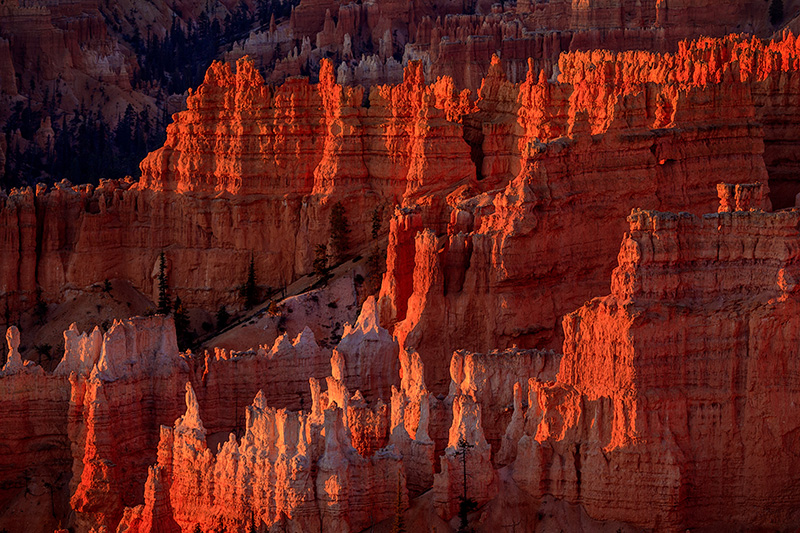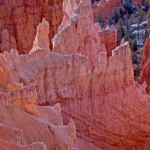Bryce Canyon National Park, Utah
I’m fortunate to be able to return to Bryce Canyon National Park every October. It’s a wonderful time to be there. The air is clear and cold and the sun rising above the San Francisco peaks on the eastern horizon (the western boundary of Dinétah, the Navajo ancestral homeland given to them by the Holy People) is like the beginning of time itself.
Bryce Canyon sunrises are to be savored, every moment of them. Bryce Canyon is not a canyon but an enormous amphitheater that faces the rising sun. There is nothing between the hoodoos and fins of Bryce and the approaching sun other than the curvature of the earth. It’s best to arrive early while it is still dark. The last stars are still twinkling above as the light begins to gather on the horizon. As the minutes slip by, the faint gray light struggles to push back the dark. As it gains strength, it gradually turns to first a pale orange and then an intense orange, crowned by the dark blue of the still, night sky. It is thrilling to experience and it continues to get even better.
The glow on the horizon continues to grow, becoming a blinding yellow as the night quickly recedes. Just when you think the glow couldn’t get any more intense, a fiery sliver appears and continues to grow inexorably into the brilliant orange disk of our very own star. That’s when the hoodoos, arrayed in the soft, gentle light of dawn, change their robes for the glorious first light of morning. Continue reading “Making a Photograph – Primal Dawn”
(159)


